Leaf Cutter Ants: How Small Insects Cut Through a Big World
Samantha Cohen and Robert Schofield

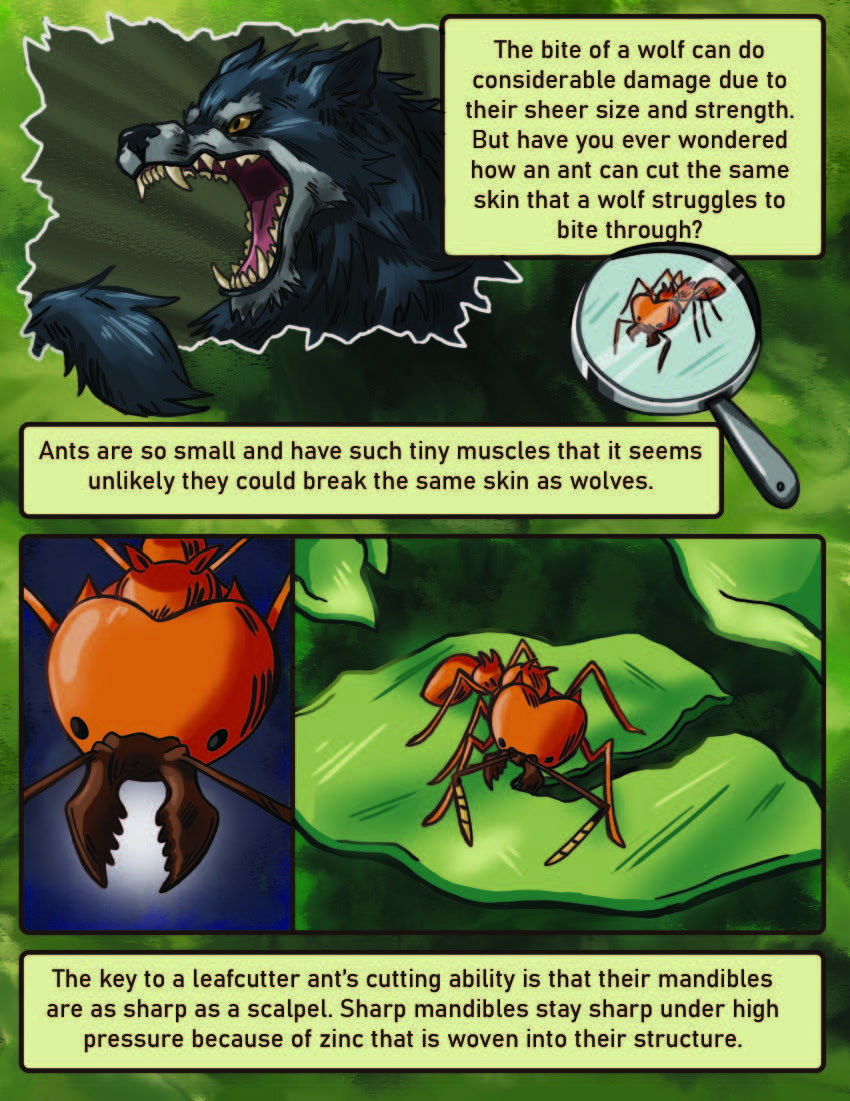
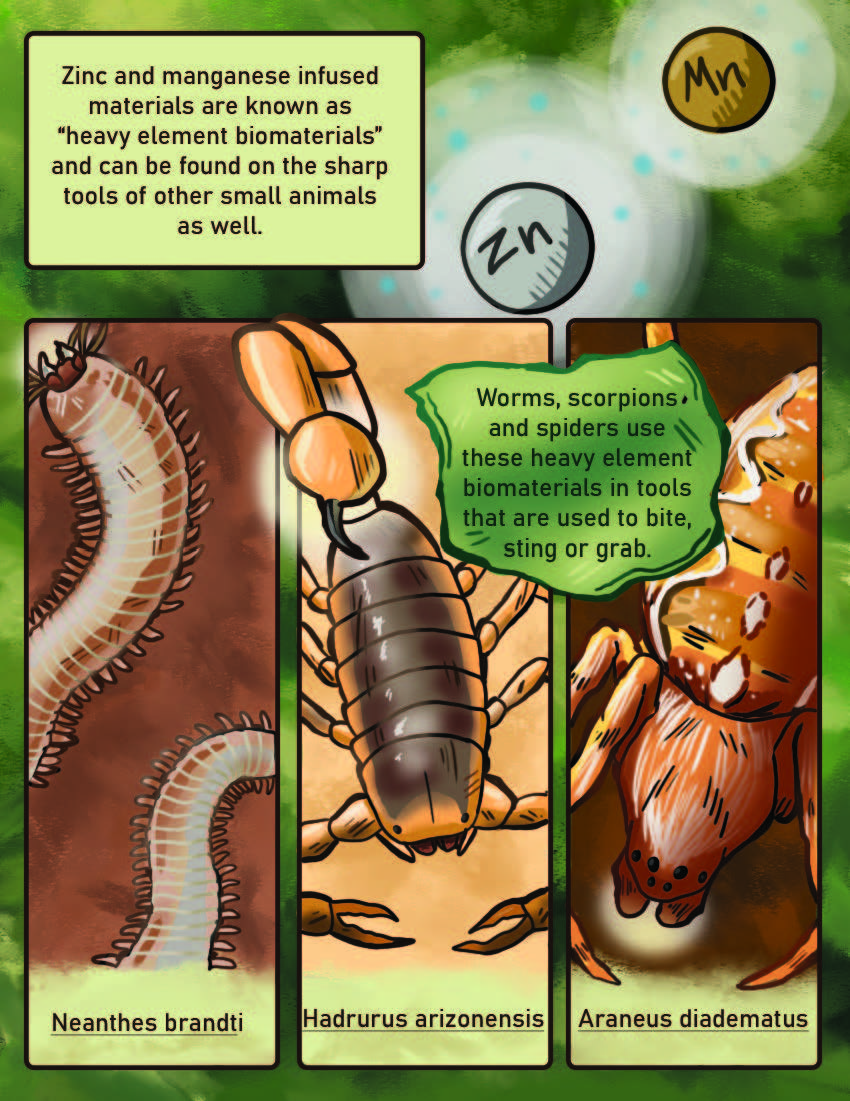
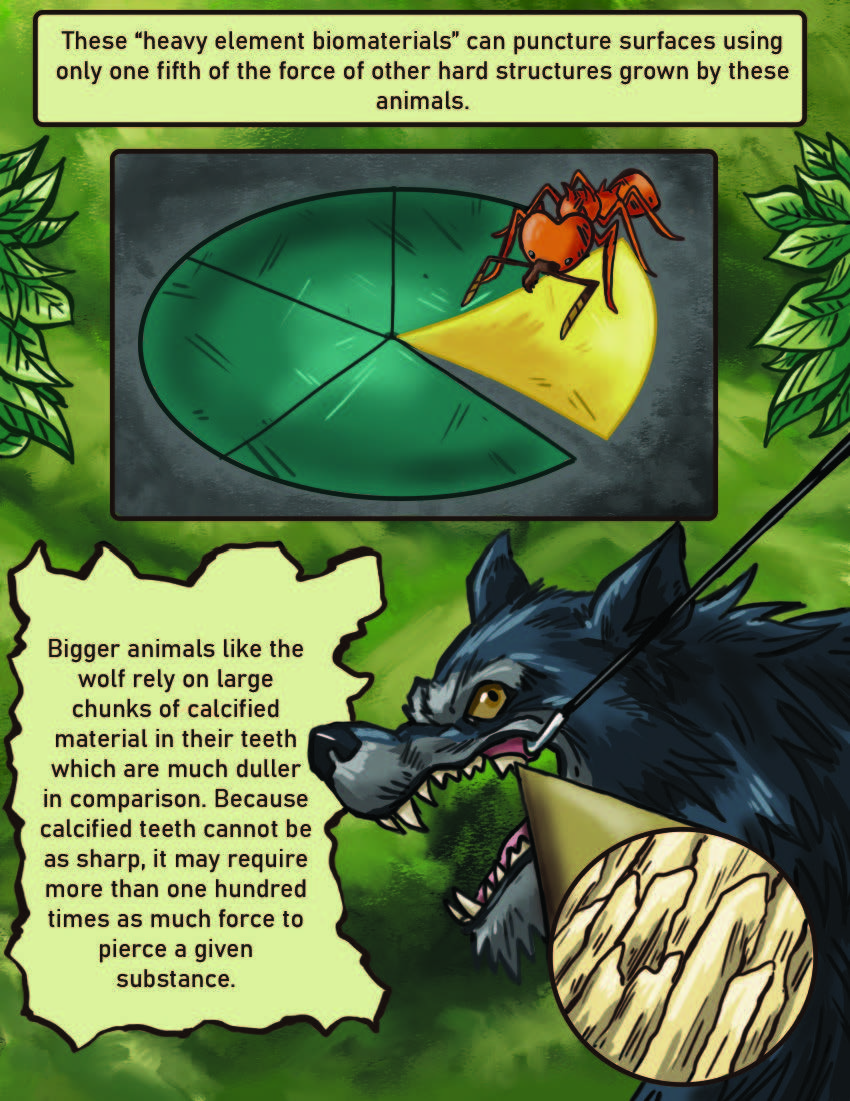
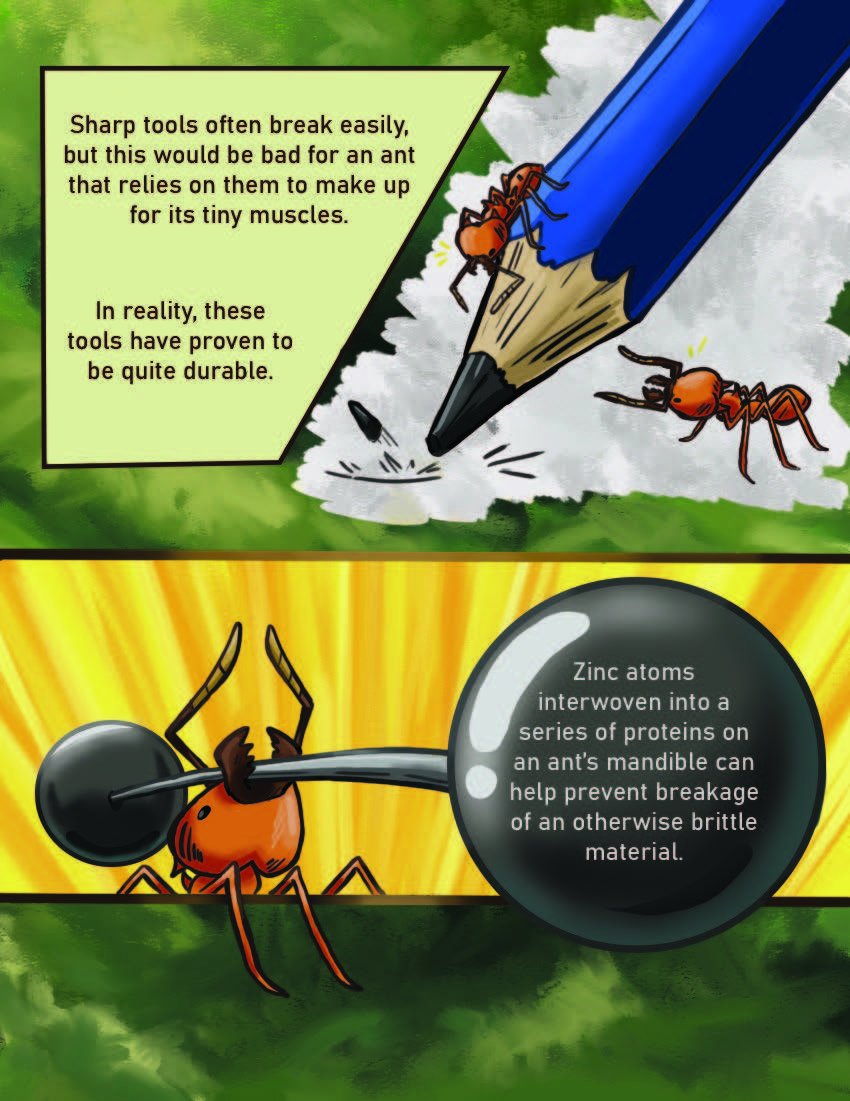
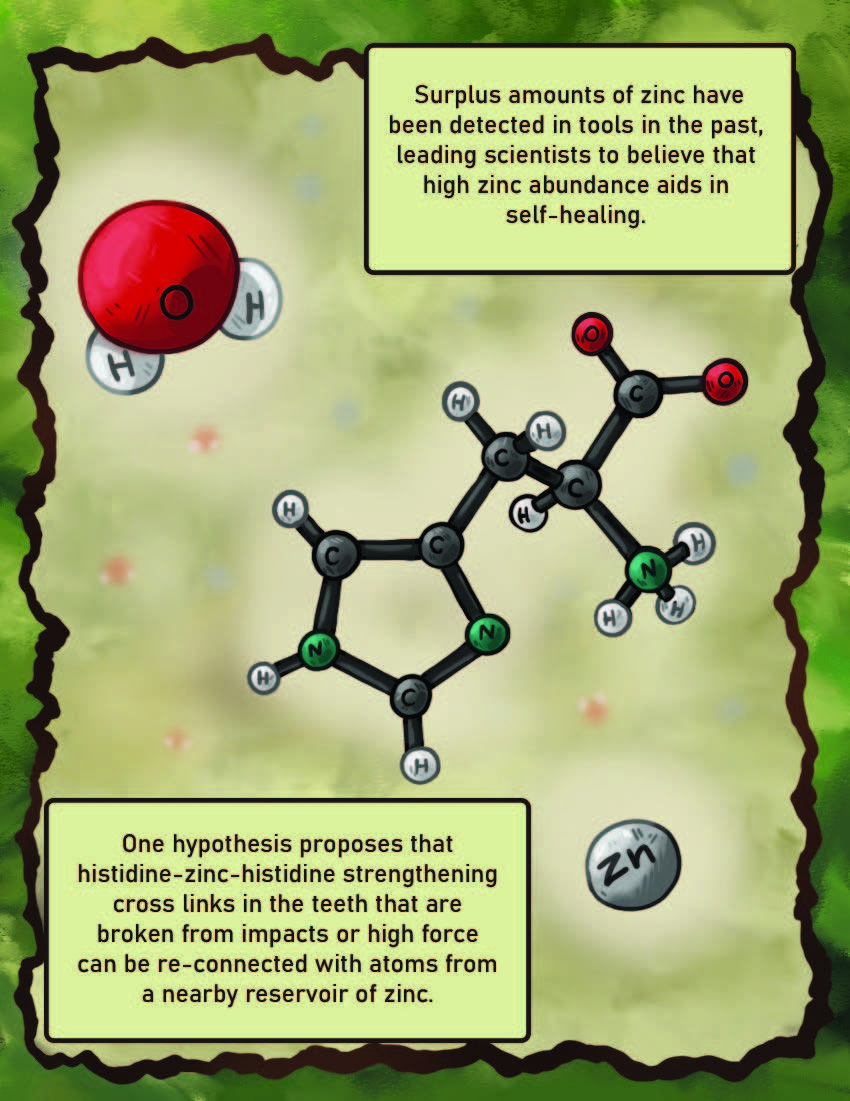
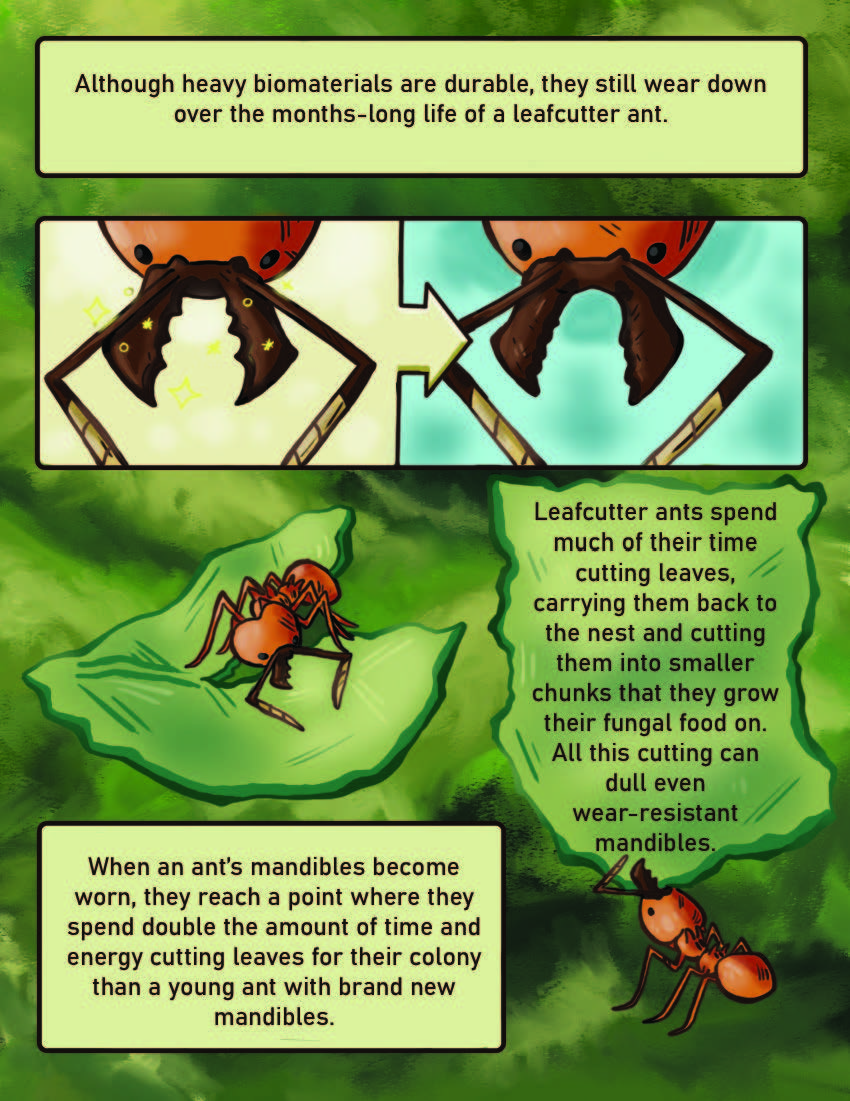
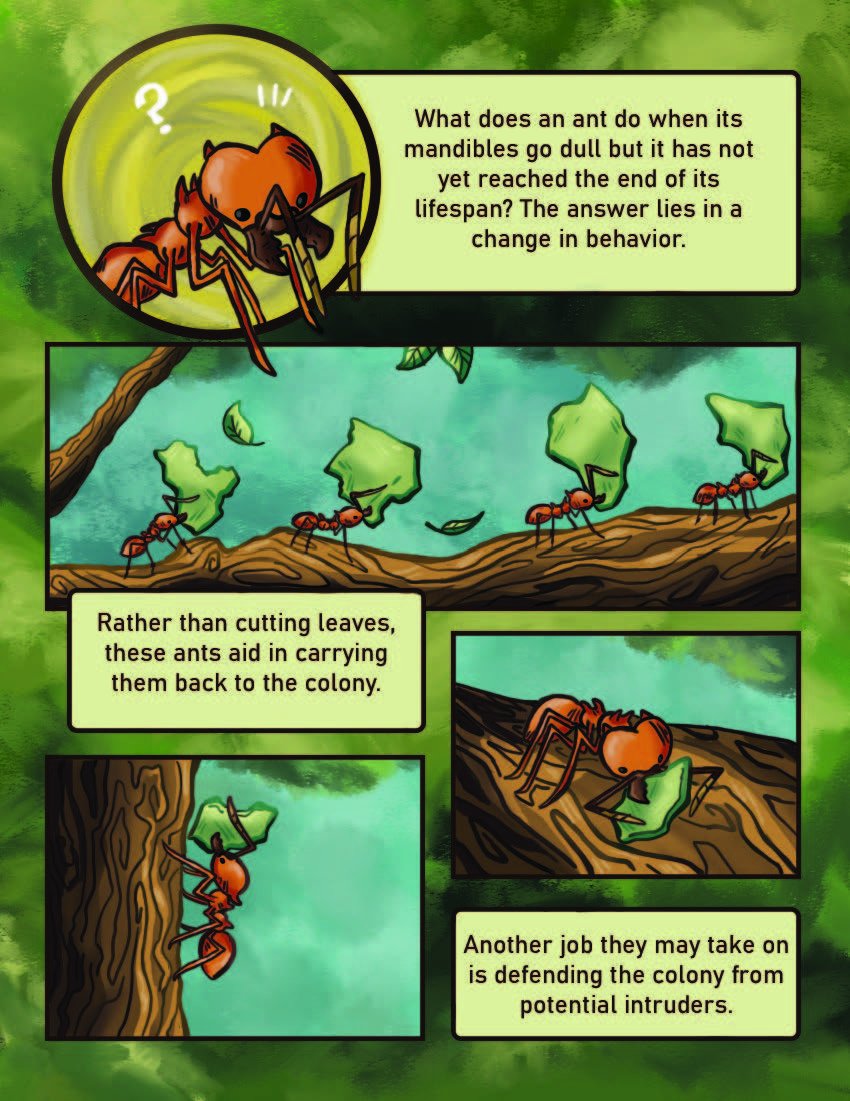
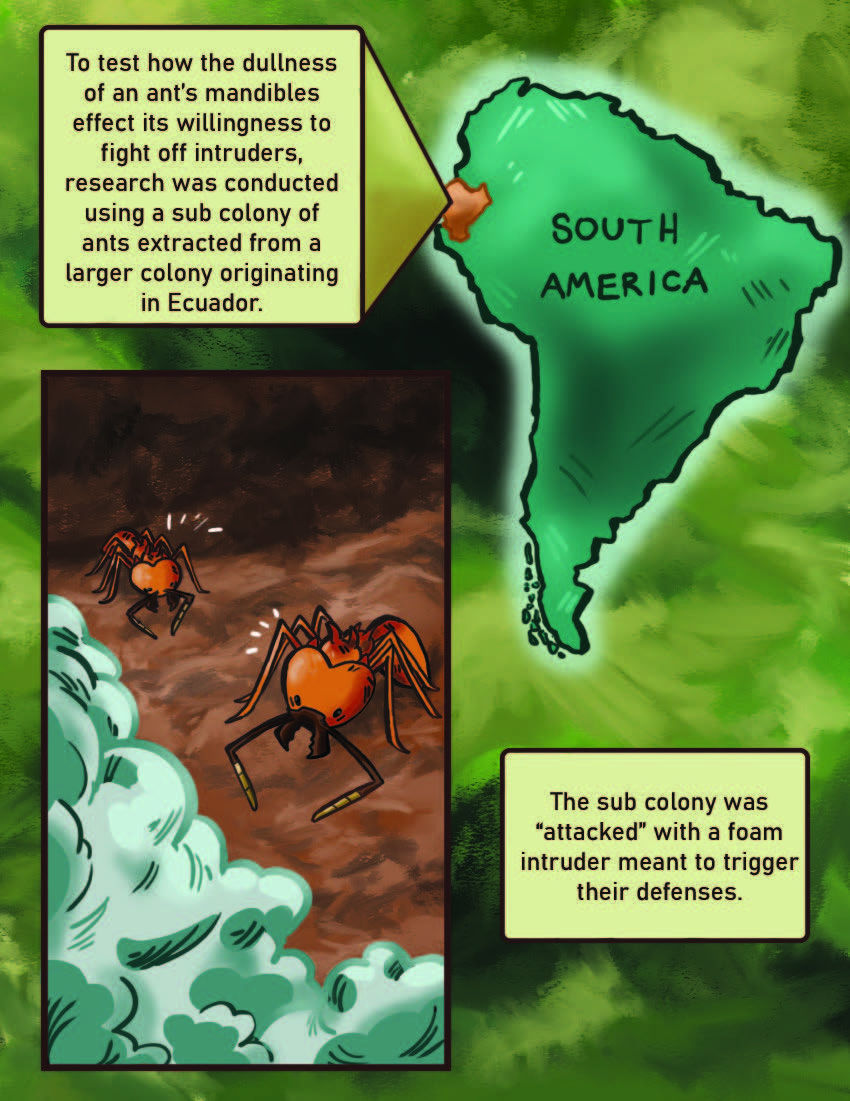
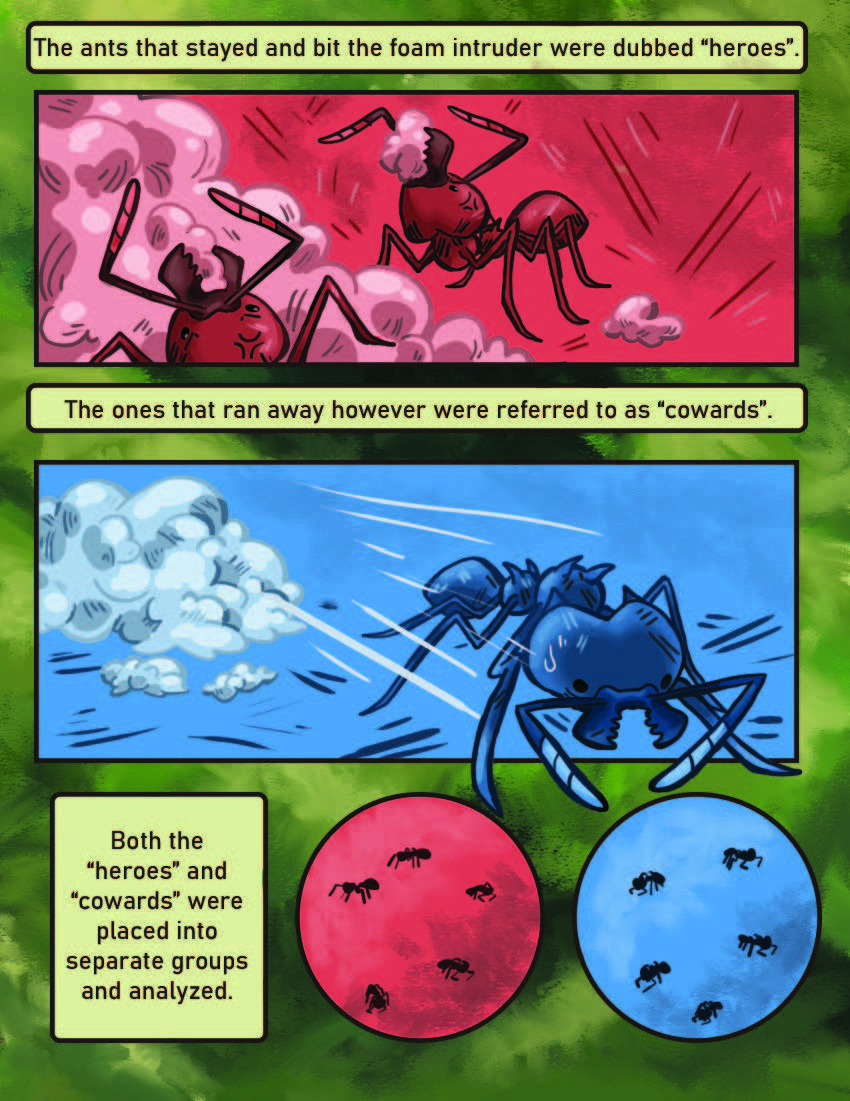
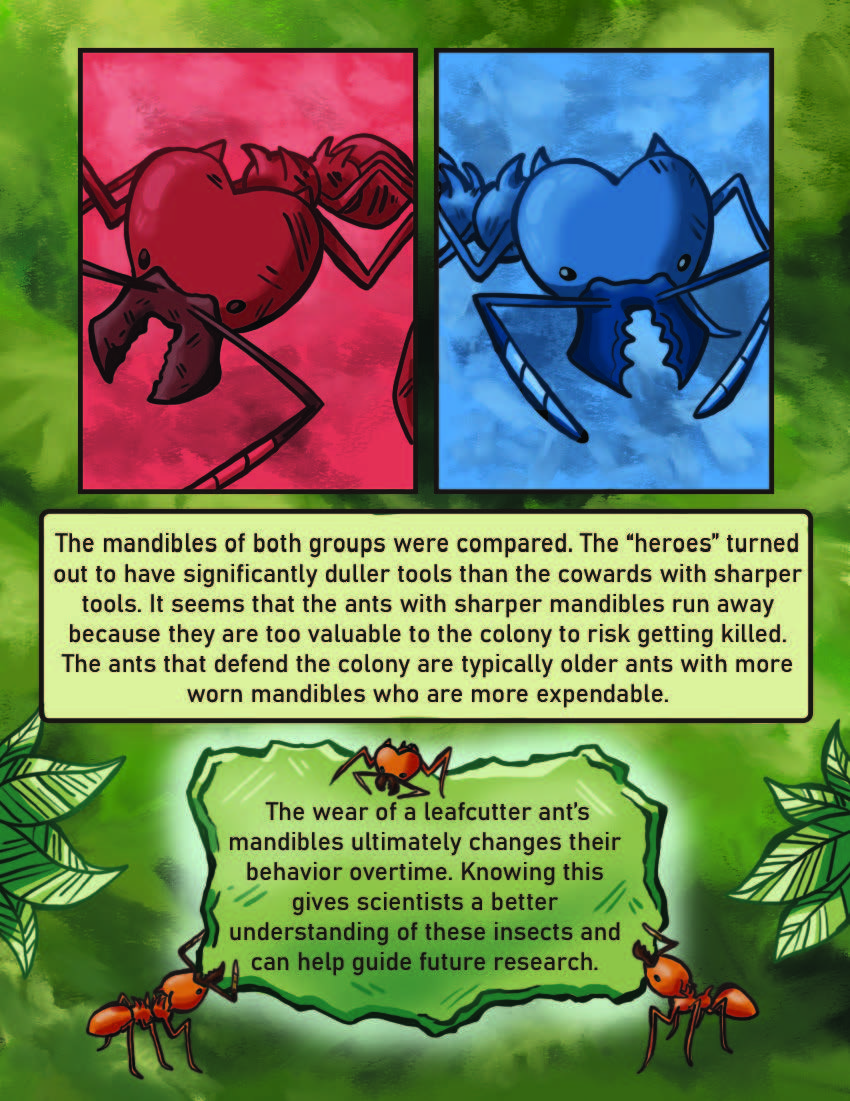
Transcript
Overview
This is a digitally drawn comic fully colored in a simple, painterly style. The background of most pages is an abstract green gradient. All of the ants pictured in this comic are leaf cutter ants that have two sharp serrated mandibles on their face that they use to cut and carry leaves.
Cover
Leaf Cutter Ants: How Small Insects Cut Through a Big World
Sam Cohen
Dr. Robert Schofield
The University of Oregon Science Comics Fellowship program
Cover Description: Four ants carry pieces of leaves between their serrated mandibles as they crawl down a log.
Page 1
Panel 1: A snarling wolf. The edges of this panel are serrated as if they have been torn. “The bite of a wolf can do considerable damage due to their sheer size and strength. But have you ever wondered how an ant can cut the same skin that a wolf struggles to bit through?”
Panel 2: A magnifying glass shows a small ant with serrated mandibles. “Ants are so small and have such tiny muscles that it seems unlikely they could break the same skin as wolves.
Panel 3: A close-up on an ant’s head. Its mandibles have sharp serrated edges.
Panel 4: An ant sits on a leaf, tearing a large cut in the leaf with its mandible. “The key to a leafcutter ant’s cutting ability is that their mandibles are as sharp as a scalpel. Sharp mandibles stay sharp under high pressure because of zinc that is woven into their structure.
Page 2
Panel 1: “Zinc and manganese infused materials are known as ‘heavy element biomaterials’ and can be found on the sharp tools of other small animals as well.” Zinc and manganese atoms, surrounded by their electrons, float around.
Panel 2: “Neanthes brandti” Two worm-like creatures with lots of legs like a centipede and green iridescent stripes. “Worms, scorpions and spiders use these heavy element biomaterials in tools that are used to bite, sting or grab.
Panel 3: “Hadrurus arizonensis” A large grey and orange scorpion. Its stinger sticks up from its back and breaks through the edges of the panel.
Panel 4: “Araneus diadematus.” The head and body of a spider with 6 eyes. Its legs are mostly out of the panel.
Page 3
Panel 1: “These ‘heavy element biomaterials’ can puncture surfaces using only one fifth of the force of other hard structures grown by these animals.” A pie chart is divided into 5 equal sections. One section is highlighted, and an ant is picking it up with its mandibles.
Panel 2: “Bigger animals like the wolf rely on large chunks of calcified material in their teeth which are much duller in comparison. Because calcified teeth cannot be as sharp, it may require more than one hundred times as much force to pierce a given substance.” A wolf with its mouth open, a hook from out of the panel pulling up one side of the wolf’s mouth. A magnification point zooms in on the surface of the wolf’s teeth and shows that the surface looks ‘shingled.’
Page 4
Panel 1: “Sharp tools often break easily, but this would be bad for an ant that relies on them to make up for its tiny muscles. In reality, these tools have proven to be quite durable. Ants crawl on a pencil. The pencil’s tip breaks off as it’s pressed into a writing surface.
Panel 2: “Zinc atoms interwoven into a series of proteins on an ant’s mandible can hep prevent breakage of an otherwise brittle material.” An ant lifts a barbell with its mandible.
Page 5
“Surplus amounts of zinc have been detected in tools in the past, leading scientists to believe that high zinc abundance aids in self-healing.”
A water molecule, histidine molecule, and zinc atom float.
“One hypothesis proposes that histidine-zinc-histidine strengthening cross links in the teeth that are broken from impacts or high force can be re-connected with atoms from a nearby reservoir of zinc.”
Page 6
“Although heavy biomaterials are durable, they still wear down over the months-long life of a leafcutter ant.”
Panel 1: A close-up on an ant’s mandibles looking sharp, shiny and new.
Panel 2: A close-up on the same ant’s mandibles looking dull and worn.
Panel 3: “Leafcutter ants spend much of their time cutting leaves, carrying them back to the nest and cutting them into smaller chunks that they grow their fungal food on. All this cutting can dull even wear-resistant mandibles. When an ant’s mandibles become worn, they reach a point where they spend double the amount of time and energy cutting leaves for their colony than a young ant with brand new mandibles.” Two ants stand on and cut through pieces of leaves.
Page 7
Panel 1: An ant is surprised and confused. “What does an ant do when its mandibles go dull but it has not yet reached the end of its lifespan? The answer lies in a change in behavior.”
Panel 2: Four ants stand on a branch carrying pieces of leaves. “Rather than cutting leaves these ants aid in carrying them back to the colony.”
Panel 3: An ant crawls up a tree holding a piece of leaf.
Panel 4: An ant holds a piece of leaf on a tree branch. “Another job they may take on is defending the colony from potential intruders.
Page 8
Panel 1: “To test how the dullness of an ant’s mandibles effect its willingness to fight off intruders, research was conducted using a sub colony of ants extracted from a larger colony originating in Ecuador.” A map of South American with Ecuador highlighted.
Panel 2: Two ants are surprised as a foamy green fog rolls into their burrow. “The sub colony was “attacked” with a foam intruder meant to trigger their defenses.”
Page 9
Panel 1: “The ants that stayed and bit the foam intruder were dubbed ‘heroes.’” Two ants attack the foam by biting it with their mandibles, the panel is tinged vibrant pink.
Panel 2: “The ones that ran away however were referred to as ‘cowards.’” A sweaty ant runs away from the foam, the panel is tinged blue.
Panel 3: “Both the ‘heroes’ and ‘cowards’ were placed into separate groups and analyzed.” Two circles, one tinged pink and one tinged blue, each contain 5 ants.
Page 10
Panel 1: A close-up of an ant with battered, dull mandibles in a pink tinged panel.
Panel 2: A close-up of an ant with sharp mandibles in a blue tinged panel.
“The mandibles of both groups were compared. The ‘heroes’ turned out to have significantly duller tools than the cowards with sharper tools. It seems that the ants with sharper mandibles run away because they are too valuable to the colony to risk getting killed. The ants that defend the colony are typically older ants with more worn mandibles who are more expendable.”
Panel 3: the text on this panel is written on a torn piece of leaf. Ants surround the panel, holding the leaf. “The wear of a leafcutter ant’s mandibles ultimately changes their behavior over time. Knowing this gives scientists a better understanding of these insects and can help guide future research.”
